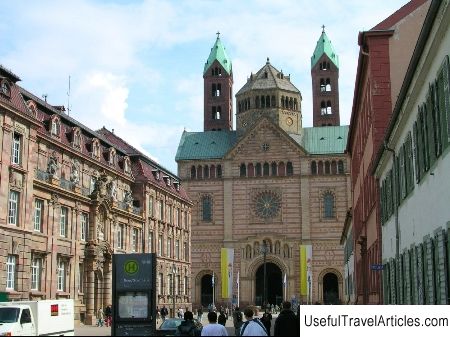Speyer Cathedral in Germany
Rating: 8,3/10 (874 votes)  Speyer Cathedral – the imperial cathedral in the German town of Speyer, the largest surviving Romanesque cathedral. Since 1981, it has been listed as a UNESCO World Heritage Site. The cathedral was built by 1061 by the Emperor of the Holy Roman Empire. Construction was started by Conrad II, continued by his son Henry III, and completed by his grandson Henry IV. Under him, the consecration of the cathedral took place. At that time, Speyer Cathedral was one of the largest buildings in the world and symbolized the indestructible power of the Kaiser. According to the observations of researchers, the construction of the cathedral was a prerequisite for the appearance of white-stone architecture, in particular, in Ancient Russia. Over the centuries, the cathedral has been completed and restored many times. In 1689, the soldiers of Louis XIV destroyed the cathedral, leaving only the walls and desecrating the graves. At the end of the next century, the cathedral was restored and an extensive lobby was added. However, soon the cathedral was again desecrated by the French. In 1846, at the expense of Ludwig I, the Bavarian king, a complete restoration of the cathedral was carried out. Also, the interior of the cathedral was supplemented with frescoes. The names of prominent organists in Germany are associated with the history of the cathedral: Leo Kremer and Ludwig Doerr; and under the altar, in the crypt are buried Germanic kaisers and kings: Konrad II, his wife Gisela, Henry III, Henry IV, Henry V, Philip of Swab, Rudolf I Habsburg, Adolf Nassau, Albrecht I Habsburg. We also recommend reading Wies Pilgrimage Church in Germany Topic: Speyer Cathedral in Germany. |




